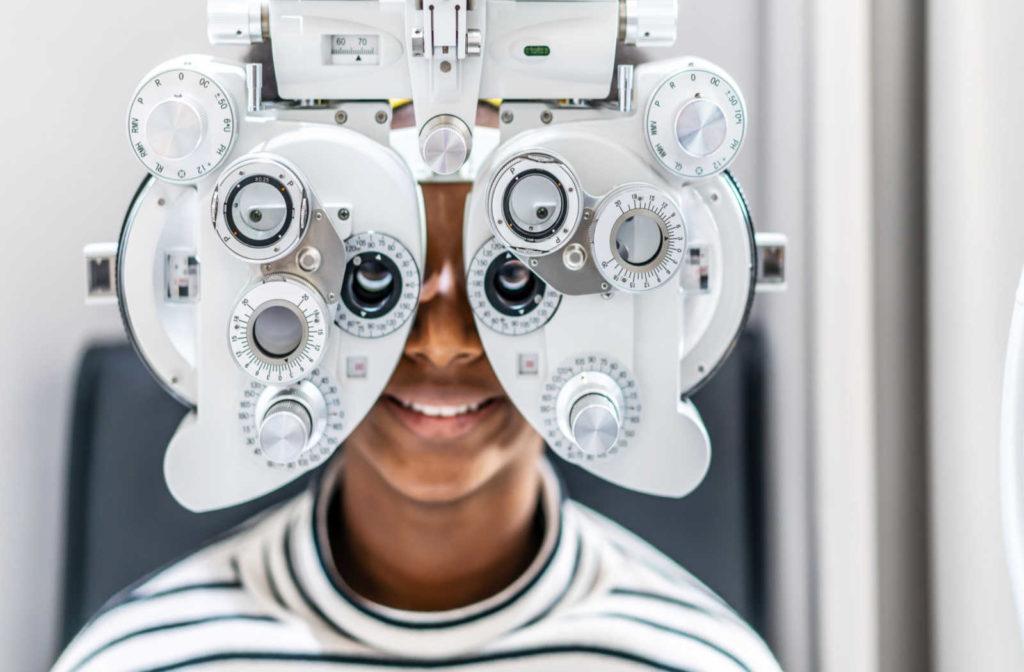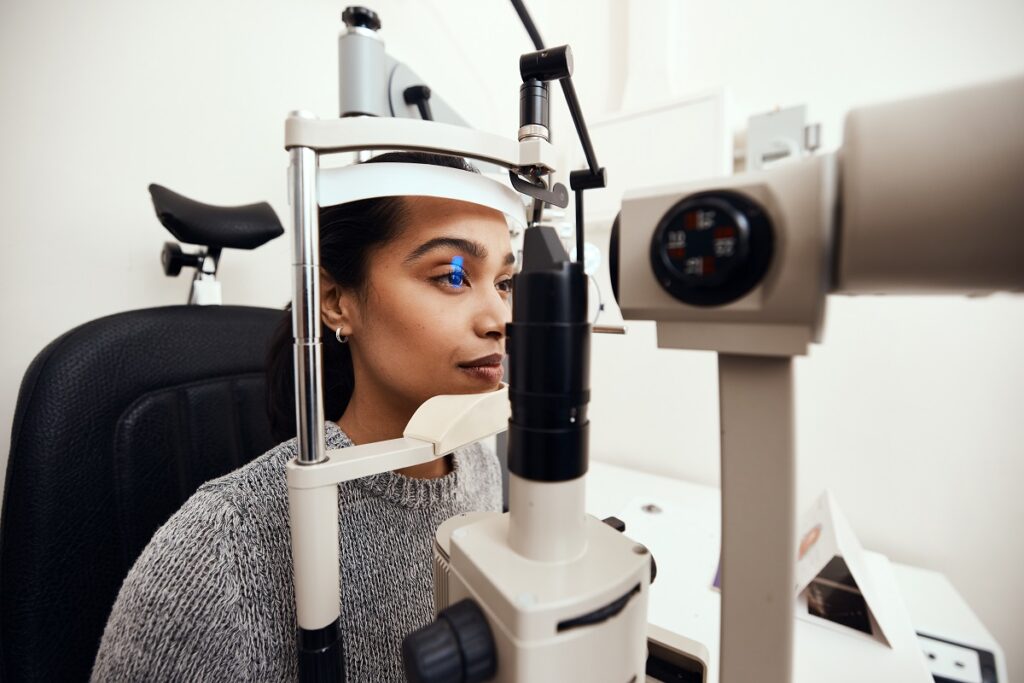The Relevance of Regular Check-Ups with an Eye Doctor Optometrist
The Relevance of Regular Check-Ups with an Eye Doctor Optometrist
Blog Article
Exploring the Newest Technological Advancements in Optometry and What They Mean for Optometrists
From the precision of Optical Comprehensibility Tomography to the nuanced insights offered by AI-driven analysis tools, these innovations are setting brand-new criteria in person assessment and therapy. As these developments penetrate the technique, optometrists are encountered with the challenge of accepting these devices to boost patient end results.
Advancements in Diagnostic Tools
Advancing the area of optometry, advancements in diagnostic tools have reinvented the way eye treatment specialists assess and diagnose ocular conditions and aesthetic problems. The previous decade has seen considerable technological innovations, allowing more precise and comprehensive assessments.
An additional trick innovation is the intro of advanced corneal topography systems, which map the surface curvature of the cornea with accuracy. These tools are specifically beneficial for fitting contact lenses and diagnosing corneal problems. In addition, electronic retinal imaging has actually changed conventional ophthalmoscopy, supplying detailed, scenic views of the retina that facilitate extensive aesthetic evaluations.
The growth of wavefront aberrometry has likewise been essential, allowing the evaluation of refractive errors with unmatched accuracy (Opticore Optometry). This innovation helps in personalizing restorative lenses and boosting medical outcomes for refractive surgical procedures. Jointly, these analysis advancements equip optometrists to deliver premium patient treatment, making sure very early intervention and tailored treatment methods, ultimately boosting aesthetic health results
AI in Patient Management
Structure on the foundation of innovative analysis tools, the unification of man-made knowledge (AI) in individual administration stands for a transformative leap for optometry. AI systems are increasingly used to enhance performance, accuracy, and personalization in individual treatment.
Additionally, AI-driven platforms assist in streamlined client communications and administrative processes. Automated scheduling, online appointments, and individualized follow-up strategies not just boost patient complete satisfaction but additionally optimize time administration for specialists. These systems can triage clients based upon the urgency of their conditions, making certain that those in critical need get punctual interest.
Moreover, AI improves decision-making by supplying eye doctors with evidence-based suggestions and treatment pathways. By integrating information from electronic health records, AI tools use insights that inform medical choices, lowering the threat of errors and enhancing person outcomes. As AI continues to evolve, its role in patient monitoring will likely increase, reshaping the landscape of optometric care.
Breakthroughs in Retinal Imaging
In the world of optometry, retinal imaging has experienced impressive technological improvements that are boosting diagnostic abilities and client treatment. Technologies such as Optical Comprehensibility Tomography (OCT) and fundus photography have transformed how optometrists examine the retina and imagine. OCT, particularly, supplies high-resolution, cross-sectional pictures of the retina, permitting for the comprehensive evaluation of its layers. This capacity is vital for very early detection and administration of conditions like glaucoma, diabetic person retinopathy, and age-related macular degeneration.
Enhanced imaging methods like OCT angiography are additional refining analysis accuracy. Opticore Optometry. Such innovations assist in the identification of min retinal changes that could indicate illness development.
Furthermore, advancements in expert system are augmenting retinal imaging by allowing computerized evaluation of big datasets. These systems assist optometrists in recognizing patterns indicative of pathology, therefore enhancing diagnostic accuracy and effectiveness. Collectively, these developments are changing retinal imaging right into a keystone of modern eye care, improving end results and expanding restorative possibilities.
Teleoptometry's Expanding Role
Teleoptometry is increasingly becoming an important element of eye treatment, driven by innovations in digital communication and diagnostic tools. As optometry welcomes digital makeover, teleoptometry promotes remote consultations, permitting eye doctors to expand their solutions past standard limits. This is specifically useful in country and underserved areas where accessibility to specialized eye care is commonly restricted. By leveraging high-resolution video conferencing and progressed retinal imaging, optometrists can conduct thorough eye examinations from afar, ensuring prompt diagnosis and therapy.
The integration of man-made intelligence (AI) further enhances teleoptometry, making it possible for the analysis of aesthetic information and helping in the detection of ocular conditions such as glaucoma and diabetic retinopathy. AI-powered formulas can swiftly analyze complicated imaging information, offering eye doctors with beneficial understandings that boost medical decision-making.
Additionally, teleoptometry sustains continuity of care with seamless integration with electronic health and wellness records (EHRs), enabling optometrists to preserve thorough patient histories. When consulting with different experts., this ensures that patients receive individualized and constant treatment even.
In spite of these benefits, obstacles continue to be, consisting of guaranteeing information safety and handling individual expectations. Nevertheless, teleoptometry stands for a significant stride towards even more obtainable, efficient, and patient-centered eye treatment. As technology evolves, its function is positioned to expand additionally.

Future Fads in Eye Treatment
A myriad of innovative trends is readied to reshape the future of eye treatment, driven by technological advancements and the developing needs of individuals. One considerable fad is the integration of synthetic knowledge (AI) in diagnostics, which promises to boost the accuracy and effectiveness of eye exams. AI formulas can assess large amounts of find this data from retinal photos, possibly finding conditions like diabetic retinopathy and glaucoma earlier than conventional approaches.
Moreover, personalized medicine is obtaining grip in optometry, with hereditary screening educating personalized therapy plans. This strategy intends to enhance person results by tailoring interventions to specific genetic accounts. Wearable modern technology, such as wise contact lenses, is also coming up, offering real-time tracking of intraocular pressure or sugar degrees, thus supplying continual understandings into ocular and systemic wellness.
The fostering of augmented reality (AR) and online truth (VR) in training and client education is an additional arising trend. These modern technologies supply immersive experiences that can enhance understanding and skills both for optometrists and people. As these fads advance, eye doctors should remain abreast of technical improvements to give cutting-edge treatment, ensuring improved client end results and satisfaction in the dynamic landscape of eye care.
Conclusion

Collectively, these diagnostic advancements equip optometrists to provide premium patient care, making sure early treatment and read the full info here customized treatment approaches, eventually enhancing visual wellness outcomes.

As these technologies proceed to you can check here advance, eye doctors should adapt and integrate them right into method, eventually maximizing workflow efficiency and boosting the standard of eye care delivered to patients.
Report this page